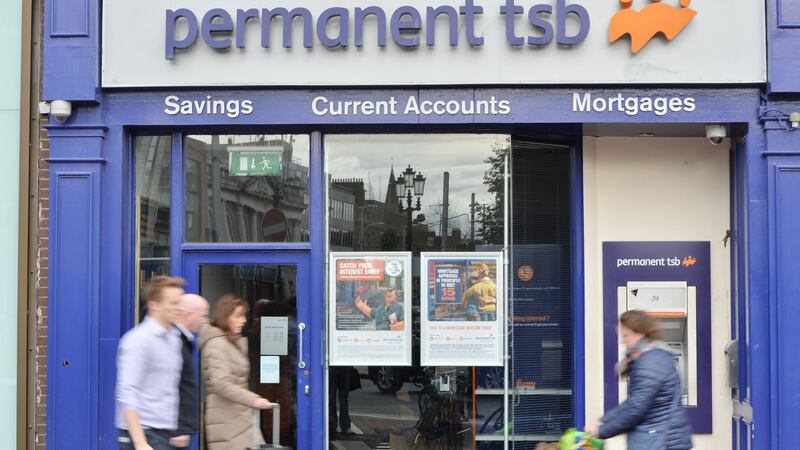Ulster Bank's chief executive of five months in the Republic, Jane Howard, couldn't have been more adamant.
"I've no mandate at all to look at Permanent TSB (PTSB) or a merger with any other bank," she told The Irish Times on Friday, when asked about perennial speculation about the Royal Bank of Scotland (RBS) unit ultimately tying up with its smaller rival.
Analysts at stockbroker Davy this week became the latest to flesh out the implications of a potential combination, calculating that it would boost the current “sub-par” profitability of the two lenders by almost 50 per cent.
Ulster Bank’s latest annual results, published on Friday, will only add to the case. The bank’s profits for last year amounted to just 0.5 per cent return on shareholder equity in the company - making it the second-weakest of the RBS’s six main segments and well off the 12 per cent target the group has set for itself for next year.
Investors and regulators look for a minimum return on equity (RoE) of at least 8 per cent for a retail lender to consider it viable long term.
When one-off effects in Ulster Bank’s 2018 figures – and anomalies such as the bank’s very high capital levels – are stripped out, its returns are about 4 per cent, at best.
The picture isn’t much better at 75 per cent State-owned Permanent TSB, which has seen its share price plunge by almost 66 per cent since the Government sold a 25 per cent stake in the bank on the stock market in 2015.
Following PTSB’s deals last year to sell and securitise €3.4 billion of non-performing loans (NPLs), the company has managed to lower its NPLs ratio from 28 per cent to a more acceptable level below 10 per cent. However, Goodbody Stockbrokers estimate that as PTSB’s balance sheet is cleaned up, it will expose a business that is generating about a 4 per cent RoE for the foreseeable future.

The belief that time would be the great healer for weaker banks is also on the wane. While a recovering mortgage market should see Irish banks rebuild their loan books over the coming years, they have all-but given up hope of beefing up their lending margins and earnings on the back of European Central Bank (ECB) any time soon.
Official line
While the ECB’s official line is that its main rate, currently at zero, remains on hold until after the summer, financial markets are betting that it will be the middle of 2020 before it moves. The prospects of rates normalising at between 2 per cent and 3 per cent in the current economic cycle are slim. That’s great news if you’re on an ECB tracker mortgage. Not so, if you are an Irish bank.
Tracker mortgages comprise an estimated 40 per cent of Ulster Bank’s loan book as much as 60 per cent of PTSB’s.
Against this backdrop, the Davy analysts – Stephen Lyons and Diarmaid Sheridan – figure that cost savings and other synergies from a combination between the two banks could lift their combined RoEs to within reach of 10 per cent and result in a group that could really take on AIB and Bank of Ireland.
Still, they pointed out in their report that the political stars are far from aligned in terms of a potential Ulster-PTSB tie-up. RBS, having pumped the equivalent of €17 billion into Ulster Bank during the financial crisis, and the group's 62.4 per cent owner, the UK government, are unlikely at the moment to be interested in "doubling down" in Ireland with fresh investment, the said.
Heightened political tension between the Republic and the UK over Brexit hardly helps. Nor, indeed, does the current parliamentary arithmetic of the Dail.
“We would expect any combination to be heavily challenged – particularly with a minority (Irish) government – and viewed as an erosion of competition rather than as a much-needed strengthening of the sector and, in fact, creating a true ‘third banking force’,” the Davy analysts said.
The report doesn’t posit how a combination could work. But a possible scenario could see Ulster Bank engage in a reverse takeover of publicly-quoted PTSB, while maintaining RBS IT systems which have received billions of pounds of investment in recent times. Such a deal could allow the Government here and RBS to raise money by selling down part of their respective stakes on the market in time.
The Government would be keen to avoid an outright sale of PTSB, as it would automatically crystallise a loss on its €4 billion bailout of the bank.
Disposal
So far, the State has recovered €1.83 billion of the aid from the disposal of the bank's former sister company Irish Life in 2015 and sale of shares and redemption of bailout bonds in PTSB in 2015. With taxpayers' remaining 75 per cent stake in the bank currently worth about €531 million - that leaves a €1.64 billion shortfall (excluding money PTSB has paid the State for banking guarantees and interest on bonds).
It’s more than a decade since speculation about a “third banking force” began - and there’s likely to be little political appetite to entertain a deal this year.
But is it not ultimately inevitable?














